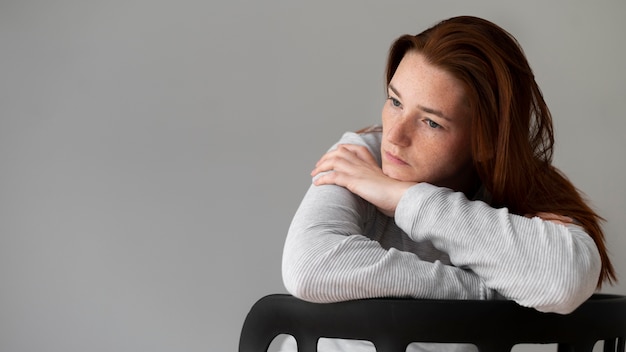The most basic type of relaxation is called diaphragmatic breathing (also known as “deep-breathing”). It is also an integral part of many other types of relaxation.
Step 1: Sit down in a chair or lie down on your back. Find a quiet place. Get comfortable. You may also want to have the lights turned off to facilitate the relaxation. If you are sitting, be sure to sit back in your chair and rest your head on the back of the chair.
Step 2: Observe your normal breathing pattern. Focus all of your attention on your breathing. Place one hand on your chest and the other hand on your stomach. Which hand moves up and down with your breathing? When most people breathe, their chest moves up and down. Although this is normal, chest breathing can promote shallow breathing and contributes to anxiety.
Step 3: Try to shift into diaphragmatic breathing. Inhale slowly through your nose. As you do this, your stomach should move outward against your hand while your chest and top hand remain still. As you exhale, your stomach should fall. Again, your top hand should remain still. Continue in the same manner. Breathe at a rate that is slightly slower than your usual rate of breathing, but remains comfortable to you. It might feel quite awkward at first.
Step 4: Practice. Become an expert at using diaphragmatic breathing through repeated practice. You should practice at least 3 times per day for 5-10 minutes per rehearsal. You can’t over-practice. When you feel comfortable with the diaphragmatic breathing and can shift to this mode easily, you are ready to use it to decrease your anxiety. You should start to apply the breathing to low levels of anxiety first, and then, gradually work up to applying it to your worst anxiety. Do not become discouraged if it doesn’t work initially; you will need to practice in order to effectively use this relaxation technique.
Q&A’s about diaphragmatic breathing:
How does it work? Anxiety is associated with stimulation of the “fight or flight” response in the body which is responsible for anxiety symptoms such as a racing heart, increased sweating and blood pressure, and muscle tension. Diaphragmatic breathing inhibits the “fight or flight” activity; in fact, exhaling actually directly decreases the heart rate.
Why do I get dizzy during the diaphragmatic breathing? You are probably breathing either too quickly or shallowly. Make sure that you are breathing at a rate that is comfortable for you.
Help! I tried to use diaphragmatic breathing to stop my anxiety, but it didn’t work. This can occur for a couple of different reasons. First, make sure that you have practiced and mastered the breathing technique before applying relaxation to decrease your anxiety. Second, if your anxiety got worse with the relaxation, you may have something called “relaxation induced anxiety”. It is not physically dangerous, but you might consider seeking help from a mental health professional who can help you to use relaxation effectively.







